How the Pension Cards and Ledgers interconnect
- Home
- World War I Articles
- How the Pension Cards and Ledgers interconnect
The recent publication of well over a million extra Pension Card from the 'Widows and Dependents' series has been detailed in an article on The Western Front Association's website, however it is likely further examples of these cards will assist with an understanding of exactly what has been published.
The 'widows and dependents cards' were created as 'finding aids' to assist clerks locate the pension files.
Take, as an example the 'widows and dependents card' below
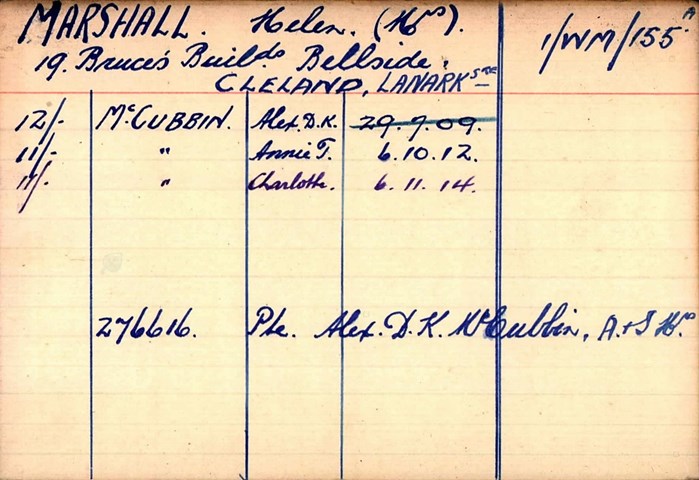
This is 'different' in design and detail from many of these cards, but is clearly meant to index Private McCubbin (A&SH) number 276616 from the 'pension claim' by Helen Marshall.
Without this card, it would have been difficult for the Ministry of Pensions clerks, upon receiving a letter from Mrs Marshall to tie in the card below (which is from the previously published series of 'soldiers died' cards).
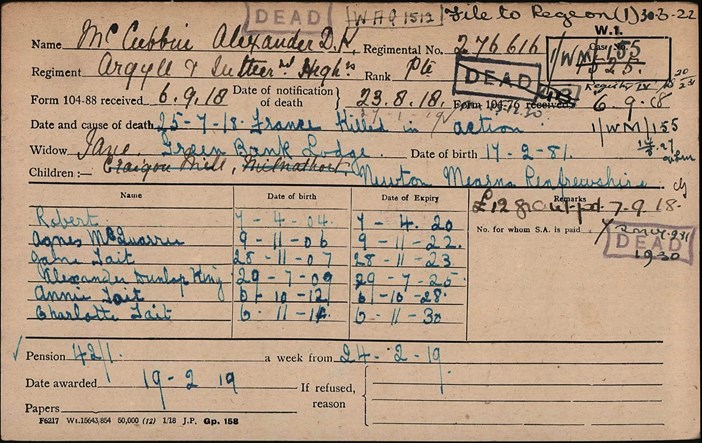
For reasons that are not obvious, the name of Helen Marshall does not appear on the above card for McCubbin.
Clearly there is a bit of a mystery here, but the main point is that the 'widows and dependents card' is a key part of the filing system employed, and for those looking at Alexander McCubbin's story provides an extra name that would open up research avenues.
The second case study below is more straightforward but illustrates the three documents that can be found and which are connected for Ernest Ledgard whose image appears in the copy below of the Dewsbury Reporter.

The above article explains how a letter was received by Ernest’s wife at their home at 285 Ravenswharfe Hill, Dewsbury on Tuesday 2 October, telling her that her husband had been killed on 20 September by a German shell. The letter, from Second Lieutenant L.N. Vizard, stated that Ernest had been killed together with the officer who was with him and goes on to describe Ernest as “....a man to be proud of, always willing, always cheerful and ready to undertake any task which fell to his lot”. Ernest, who was 37 years old, besides his widowed mother living at Craven Street, Ravensthorpe, left a wife and young child. The Liberal Club, of which he was a member, flew its flag at half mast as a sign of respect.
Ernest's widow Gertrude is clearly named on the 'soldiers died' card below.
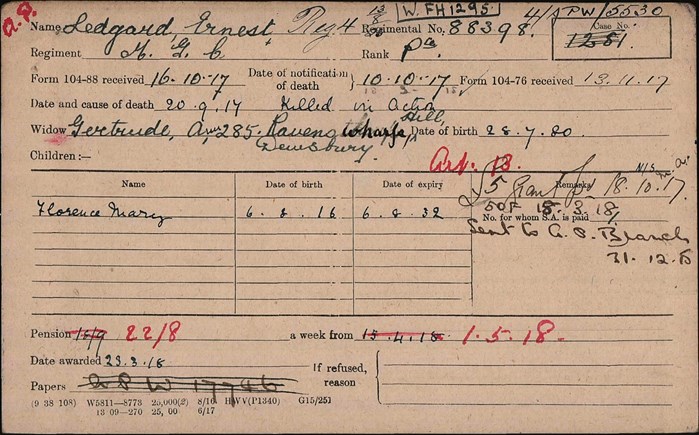
The 'widows and dependents' card would have been used to help identify the claim from paperwork received (the reason for it being yellow is not at this stage understood)
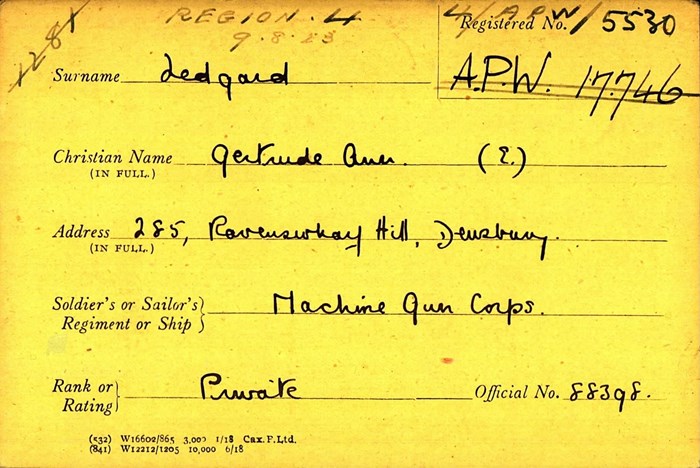
And finally, the ledger is also available
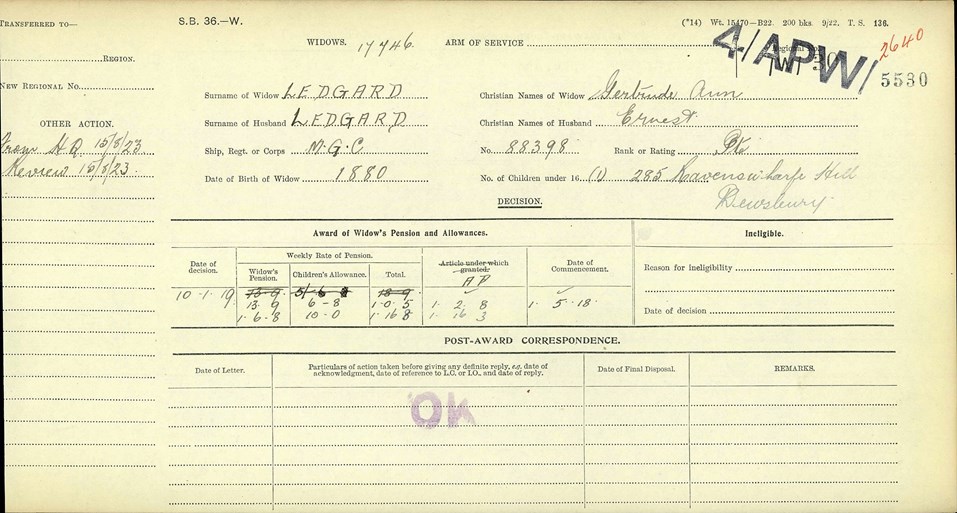
Of note is the 4/APW/5530 reference on the three cards - this is the vital code that enables the documentation to be identified.
It is also of note that (via Craig Suddick) the following has come to light, which shows how the series of cards were 'constructed' as finding aids. Craig is working through a 650 page committee report on pension from 1919. The snippet below discusses M Branch (which is the part of the Ministry of Pensions that dealt with disabled men) but there is discussion elsewhere of the other branches.
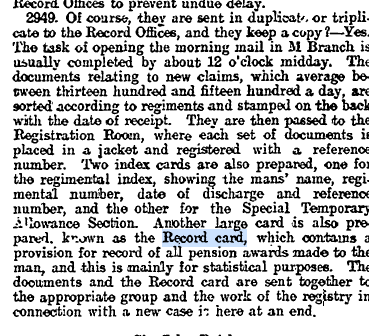
The following also is of relevance. The 'Special Temporary Allowance' cards were stored by the Registry and used as a nominal index, separate to the 'Regimental Index' (which remained with the awards section) - is without doubt the 'Widows and Dependents Cards' mentioned above.
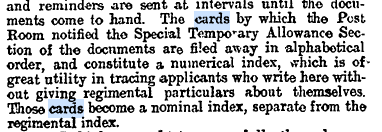
Article by David Tattersfield, Vice-Chairman, The Western Front Association





